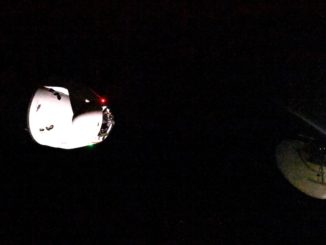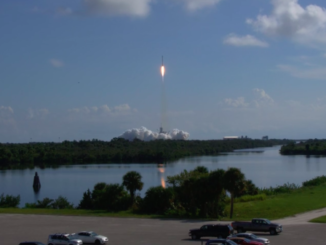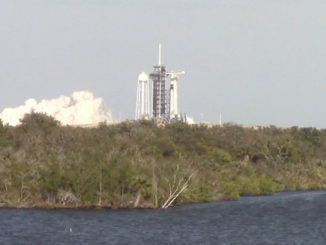
Northrop Grumman’s Antares rocket will deliver a Cygnus supply ship into orbit Thursday to begin a pursuit of the International Space Station.
The rocket’s two RD-181 engines will ignite around 3.7 seconds before liftoff from pad 0A at the Mid-Atlantic Regional Spaceport, a complex owned by the state of Virginia at NASA’s Wallops Flight Facility.
Launch is timed for 12:36 p.m. EDT Saturday, Feb. 20.
The first stage’s two RD-181 engines will power up to 864,000 pounds of thrust and burn for 3 minutes, 18 seconds, then separate from the upper stage’s Castor 30XL motor about six seconds later.
The launch, known as NG-15 in Northrop Grumman’s station resupply manifest, will be the ninth Antares mission using new, more powerful RD-181 engines, which the company ordered from the Russian engine-builder NPO Energomash to replace decades-old Russian-built AJ26 engines blamed for an Antares rocket crash seconds after liftoff in October 2014.
Once the first stage finishes its job on the NG-15 launch, the Antares rocket’s 12.8-foot-diameter (3.9-meter) diameter payload shroud will jettison in two halves at around T+plus 3 minutes, 54 seconds. An interstage adapter that connected the first and second stages will separate at T+plus 3 minutes, 59 seconds.
The launcher’s Castor 30XL solid-fueled upper stage will ignite at T+plus 4 minutes, 7 seconds, and generate up to 104,300 pounds of thrust during a burn lasting approximately 2 minutes, 45 seconds. The second stage motor will burn out at approximately T+plus 6 minutes, 52 seconds, then deploy the Cygnus spacecraft at around T+plus 8 minutes, 52 seconds.
The spacecraft’s two cymbal-shaped electricity-generating solar arrays will unfurl in a fan-like motion around two hours into the mission, and the ship’s thrusters will begin fine-tuning its approach to the space station with a series of course-correction burns, setting up for a laser-guided final approach Monday, Feb. 22.
Email the author.
Follow Stephen Clark on Twitter: @StephenClark1.



